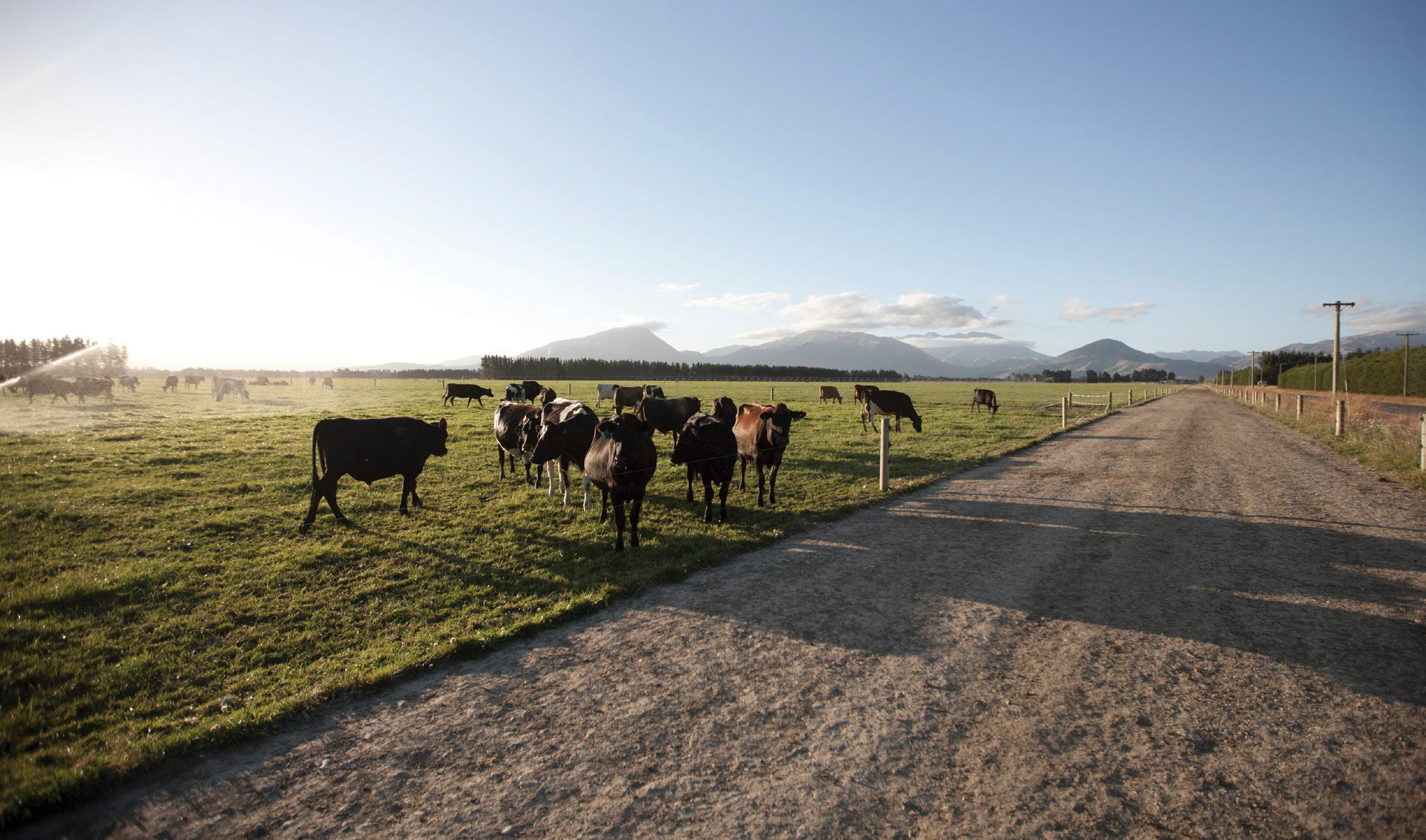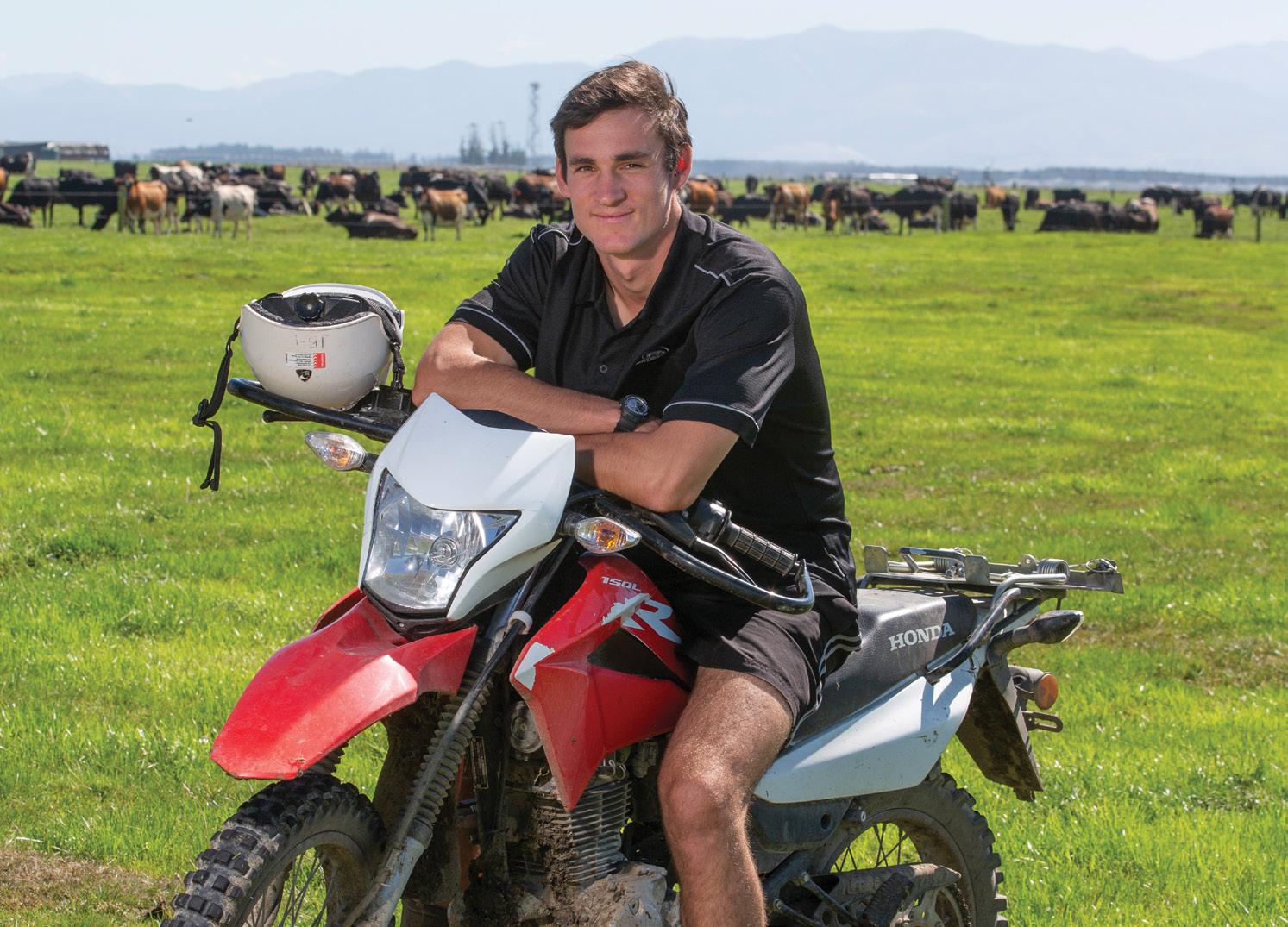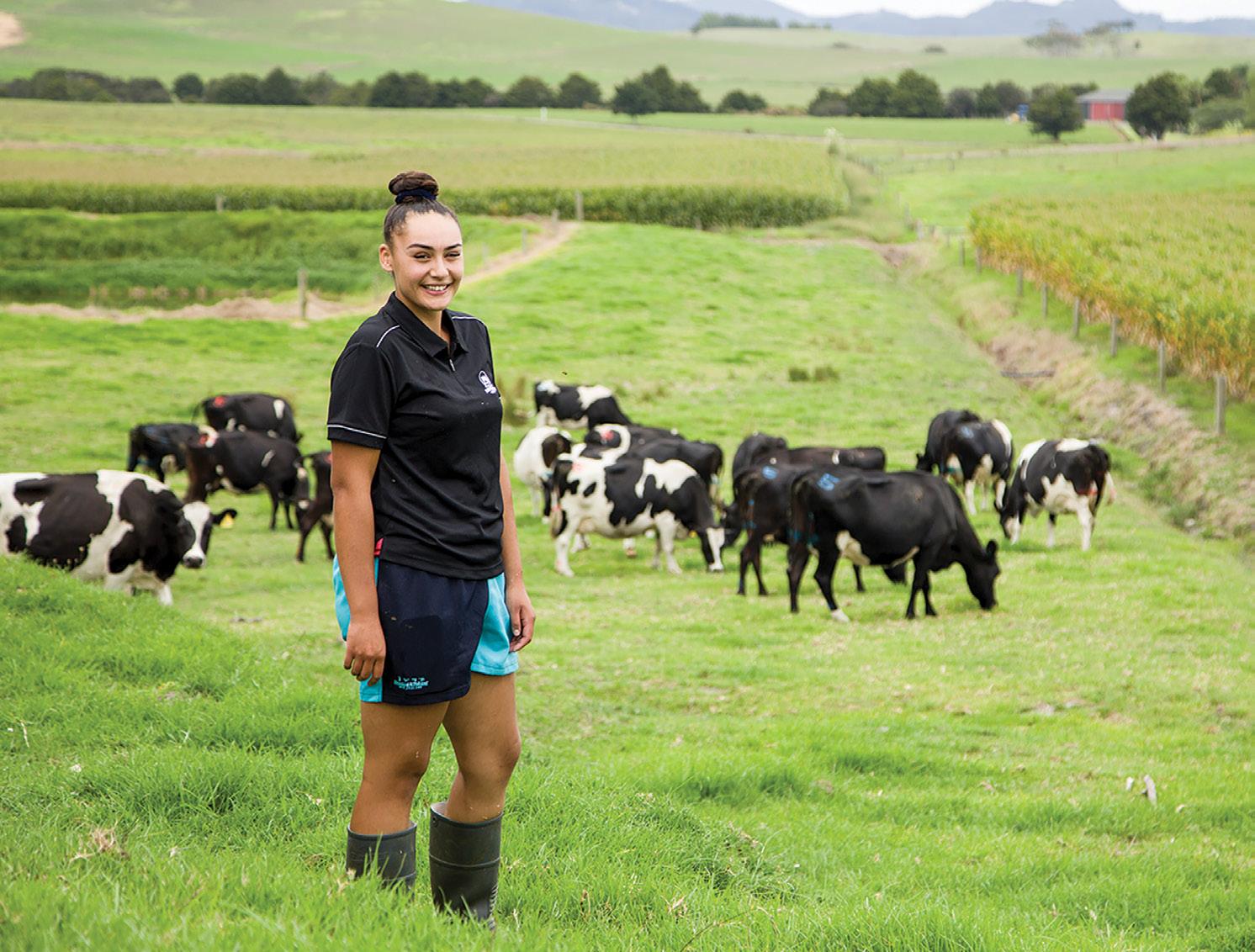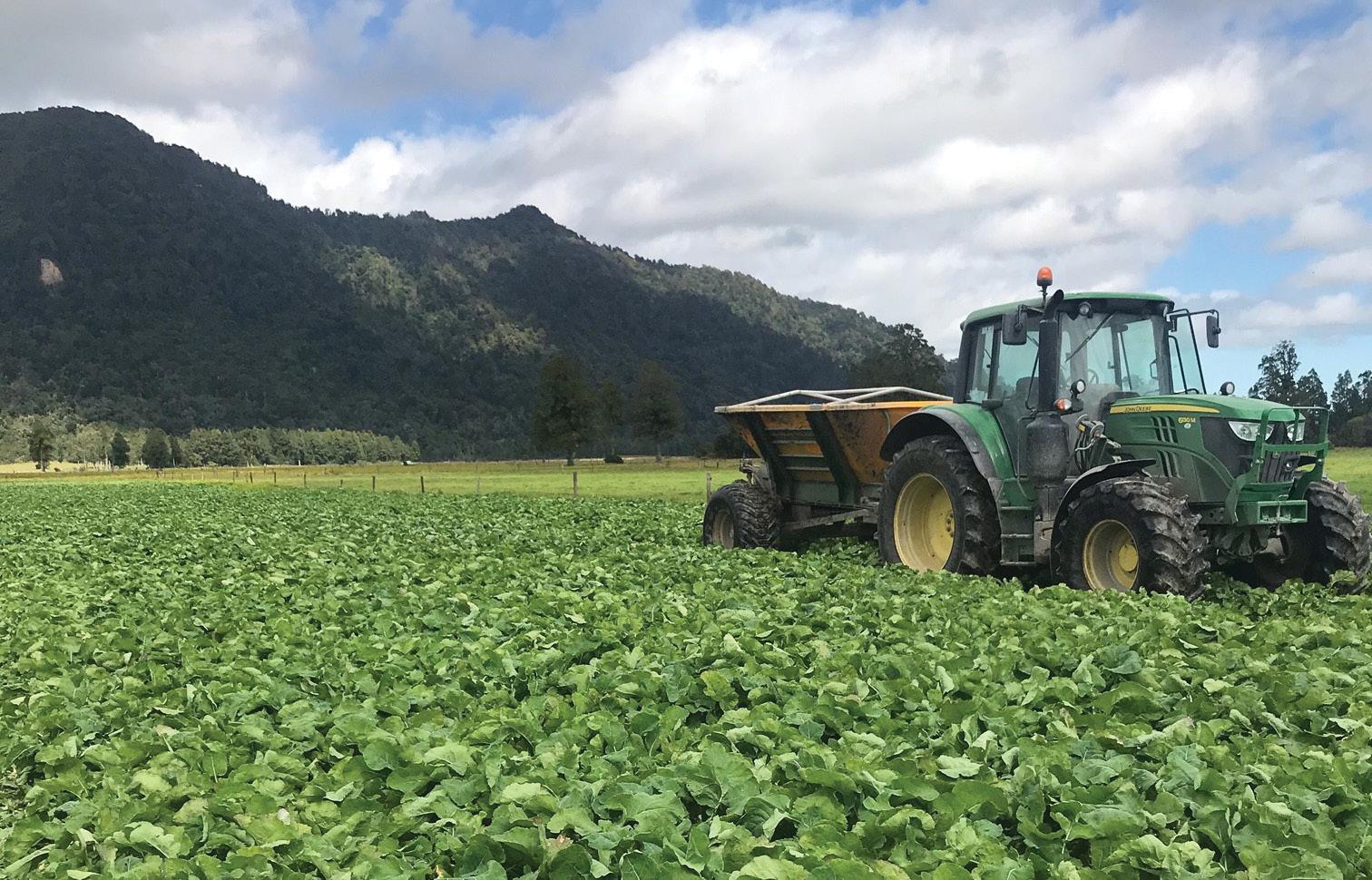RESEARCH WRAP SOILS
overseas, shows cows prioritise lying over eating and Dawn is yet to look at how loss of lying times affected rumination (cudchewing). This data was recorded by the CowManager tags. Cows lay down generally at night and were most active after the break was shifted at about 8am. Cows on kale spent less time lying between 4am and 8pm compared with the cows on fodder beet while fodder beet cows were more active during daytime hours and not in the early morning. While there were no differences found with pugging between the kale and the fodder beet paddocks, some areas of both crops had been direct drilled and seemed to hold up better, said general manager of farm operations Louise Cook.
Cows listen to the speakers over the fence at the Southern Dairy Hub’s March field day.
COMPARING CULTIVATION METHODS AND PUGGING
Cows stand their ground in pugging study Story and photos by: Karen Trebilcock
T
he Southern Dairy Hub would not have met the new rules for pugging (field damage) under the National Policy Statement (NPS) for Freshwater Management last winter. Feeding 900 cows on fodder beet or kale through June/July caused significant pugging on the farm near Invercargill especially after rain. The soils used for wintering at the hub are a mix of Edendale, which drain well but seldom dry out, and Pukemutu, which has a sub-surface pan between 600mm and 900mm deep so are vulnerable to waterlogging. In a trial, called How Much Mud is Too Much Mud, it was found all of the cows on the crops achieved the minimum standard of eight hours lying time per day on average. Most lay for more than 10 hours per day. However, 21% of the cows consistently had less than eight hours lying time per day. DairyNZ senior scientist Dawn Dalley said she was still to look at which cows were not achieving minimum lying times. 130
“It might be all the young cows, ones that have had lameness problems in the past, or low body condition score. I’ve still to crunch those figures.” Behavioural monitoring equipment consisting of CowManager tags and HOBO accelerometers were fitted to 30 cows in four mobs on kale and fodder beet for the five-week trial. Lying times were lower on rainy days and the day after but increased again two days after rain when the breaks were drier. On the days it rained, 90% of cows lay for less for than four hours per day and up to 40% of them did not lie down at all. When cows did lie down during rain it was for a longer time than normal “as if cows did not want to give up their spot”, Dawn said. Three days of rain and low temperatures were the most significant factors limiting lying time as well as the percentage of water surface pooling on the breaks. Surface water pooling in more than 17% of the break resulted in herd average lying times below 10 hours per day and when above 80%, average lying times fell below eight hours per day. Past research, both in New Zealand and
The Hedgehope Makarewa Catchment Group, which the hub is part of, has received financial support from government-funded Thriving Southland for a cropping trial across a range of soils in Southland to see if different cultivation methods can lessen pugging. “We want to see how they affect crop yields, soil conditions during grazing and what happens afterwards as well, when we are trying to get these paddocks back into crop or grass,” Louise said. At the hub, kale and fodder beet have been sown in three different ways in the same paddock – precision drilled in a cultivated seedbed, strip-tilled and directdrilled with no cultivation except weed spray. The cows will be wintered across the three cultivation methods in the one break to see if there is a difference this June and July. Louise said insect infestation during summer had been heavier on the direct drilled crops as the bugs seemed to prefer areas where there was still plant debris. Fodder beet especially was yielding much higher in the conventional cultivation areas. However, if direct drilling or similar low impact seeding methods improved soil structure and soil strength and so reduced pugging and increased cow lying times, it could be worth doing even though crop yields were lower, she said. With the farm and its cows divided into
Dairy Exporter | www.nzfarmlife.co.nz | April 2021







































